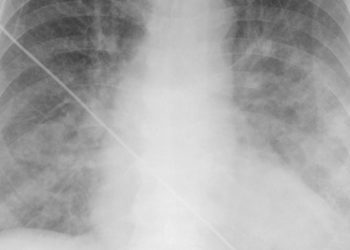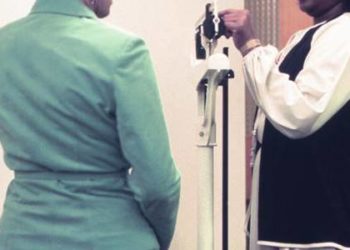The CHARM-Added trial: Adding candesartan to ACE inhibitor reduces mortality in heart failure [Classics Series]
1. Angiotensin-converting-enzyme (ACE) inhibitors had been shown to significantly reduce mortality in patients with heart failure, and it was hypothesized that adding an angiotensin-receptor blocker (ARB) would provide further clinical benefit.
2. The addition of candesartan to ACE inhibitor treatment led to significant reductions in cardiovascular mortality and hospitalization for heart failure when compared to placebo.
3. Patients taking candesartan experienced significantly higher rates of serum creatinine elevation and hyperkalemia.
Original Date of Publication: September 2003
Study Rundown: Angiotensin II is the end product of the renin-angiotensin system, and it has been shown to be involved in the process of cardiac remodeling. ACE inhibitors, which impede the conversion of angiotensin I to angiotensin II, had been shown to reduce mortality in patients with congestive heart failure. It had also been shown, however, that angiotensin II production continues despite patients taking target doses of ACE inhibitors. Thus, it was hypothesized that adding ARBs would provide better inhibition of angiotensin II and potentially improve outcomes in patients with congestive heart failure. The Candesartan in Heart failure: Assessment of Reduction in Mortality and morbidity (CHARM)-Added trial was conducted to determine the effects of adding candesartan to the treatment of patients with congestive heart failure who were already on an ACE inhibitor. In summary, adding candesartan significantly reduced the risk of both cardiovascular death and hospitalization for heart failure when compared with placebo. Patients in the candesartan group experienced significantly higher rates of increased serum creatinine and hyperkalemia.
Previously, the Val-HeFT had found that adding valsartan to conventional therapy (i.e., 93% of patients were taking ACE inhibitors) led to no significant reduction in cardiovascular mortality, but did reduce the risk of hospitalization for heart failure. Authors of the CHARM-Added trial suggested that these differences could potentially be explained by the use of different ARBs and differences in dosing between the two studies. Current recommendations suggest considering a combination of ACE inhibitor and ARB only if aldosterone antagonists are not tolerated, though this combination may be harmful.
Click to read the study in The Lancet
In-Depth [randomized controlled trial]: The CHARM-Added trial involved 2548 patients with a median follow-up of 41 months. Patients were eligible for the trial if they were ≥18 years of age, had left-ventricular ejection fraction (LVEF) ≤40%, had New York Heart Association (NYHA) class II-IV symptoms, and were already treated with an ACE inhibitor for 30 days or longer. Patients were randomized to receive either candesartan (i.e., started at 4 or 8 mg daily, titrated up to 32 mg daily) or placebo. The primary outcome was cardiovascular death or admission to hospital for the management of worsening heart failure.
Patients in the candesartan group experienced significantly lower rates of the primary outcome when compared to those in the placebo group (aHR 0.85; 95%CI 0.75-0.96). Patients on candesartan experienced significantly lower risk of cardiovascular death (aHR 0.83; 95%CI 0.71-0.97) and hospitalization for heart failure (aHR 0.83; 95%CI 0.71-0.97) compared to patients taking placebos. The candesartan group had significantly higher numbers of patients suffering from increased serum creatinine levels (p = 0.0001), hyperkalemia (p < 0.0001), or any adverse event or laboratory abnormality (p = 0.0003).
©2015 2 Minute Medicine, Inc. All rights reserved. No works may be reproduced without expressed written consent from 2 Minute Medicine, Inc. Inquire about licensing here. No article should be construed as medical advice and is not intended as such by the authors or by 2 Minute Medicine, Inc.







